

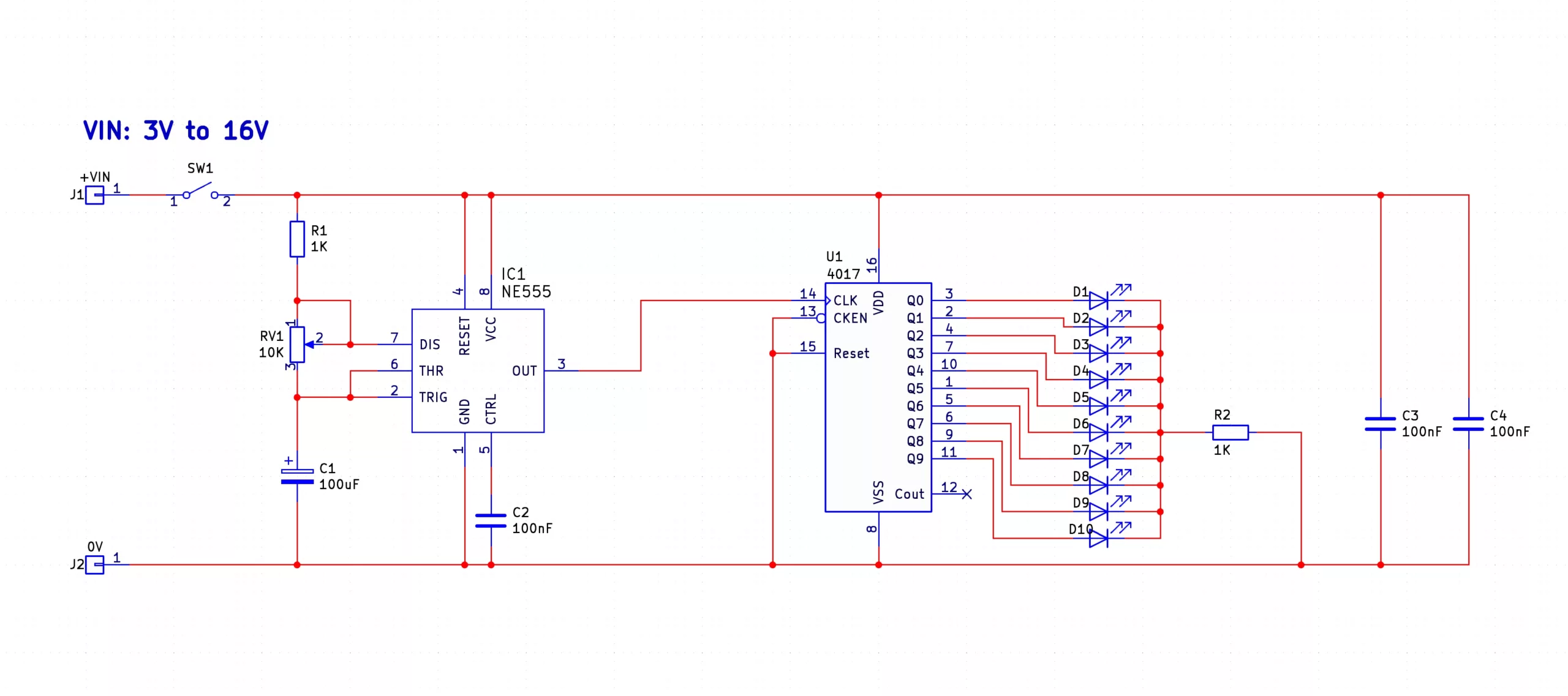
The 4017 light chaser is made up of two main circuits; a 555 astable oscillator and a 4017 5-stage Johnson counter. The 555 astable circuit is made up of a single 555 timer, a potentiometer (RV1), a resistor (R1), and a capacitor (C1). This circuit outputs a square wave whose frequency is determined by the resistance of RV1 and the larger the resistance of RV1 the slower the output frequency. You can learn more about the 555 astable circuit with this kit available from MitchElectronics. The output of the 555 astable is connected to the clock input of the 4017 and every time the output of the 555 transitions from low to high the 4017 counter transitions to the next state. The 4017 has 10 outputs that each turn on after the previous output has been turned off. The best way to see this is to look at the table below which shows the output states for each clock pulse that is fed into the CLK pin.
Each one of the outputs of the 4017 is connected to an LED and all the LEDs are connected to a single resistor, R2, in series with ground. LEDs in parallel typically require a series resistor for each LED but in this case, the circuit only requires one resistor as only one LED will ever be on and therefore, the brightness of each LED will be the same. The 4017 also has two other inputs that are not used in this circuit but may be useful to learn about; CLKEN and RESET. The CLKEN pin is an active low pin and when this pin is low (i.e. 0V), the 4017 counter will count every time a clock pulse is detected. If this pin is connected to high (i.e. +V) then the counter will not count when a clock pulse is detected and can be useful for enabling/disabling the counter. The RESET pin is an active high pin and when connected to high (i.e. +V), the counter will reset all outputs. This is useful for setting the counter to a known state (output Q0 = 1).
| Component | PCB Reference | Quantity | Looks Like |
|---|---|---|---|
| 8 DIP Socket | IC1 | 1 | 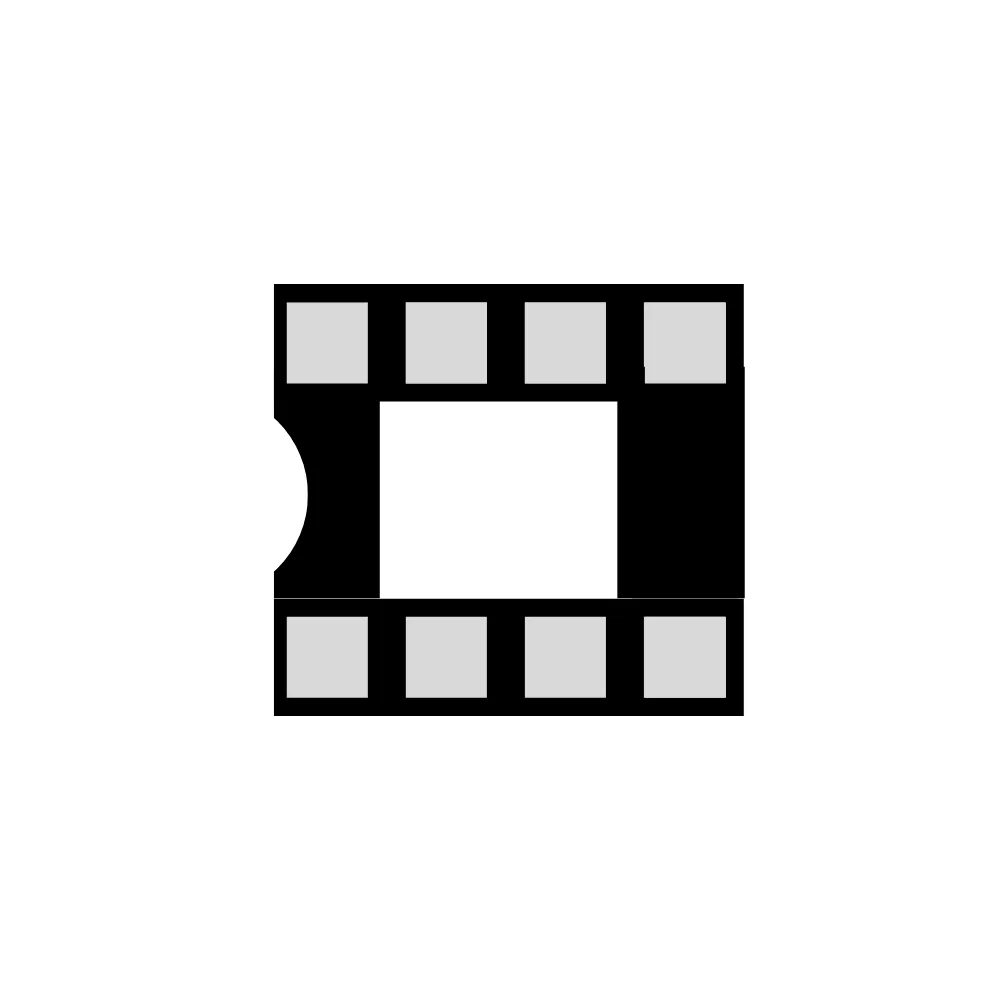 |
| 16 DIP Socket | U1 | 1 | 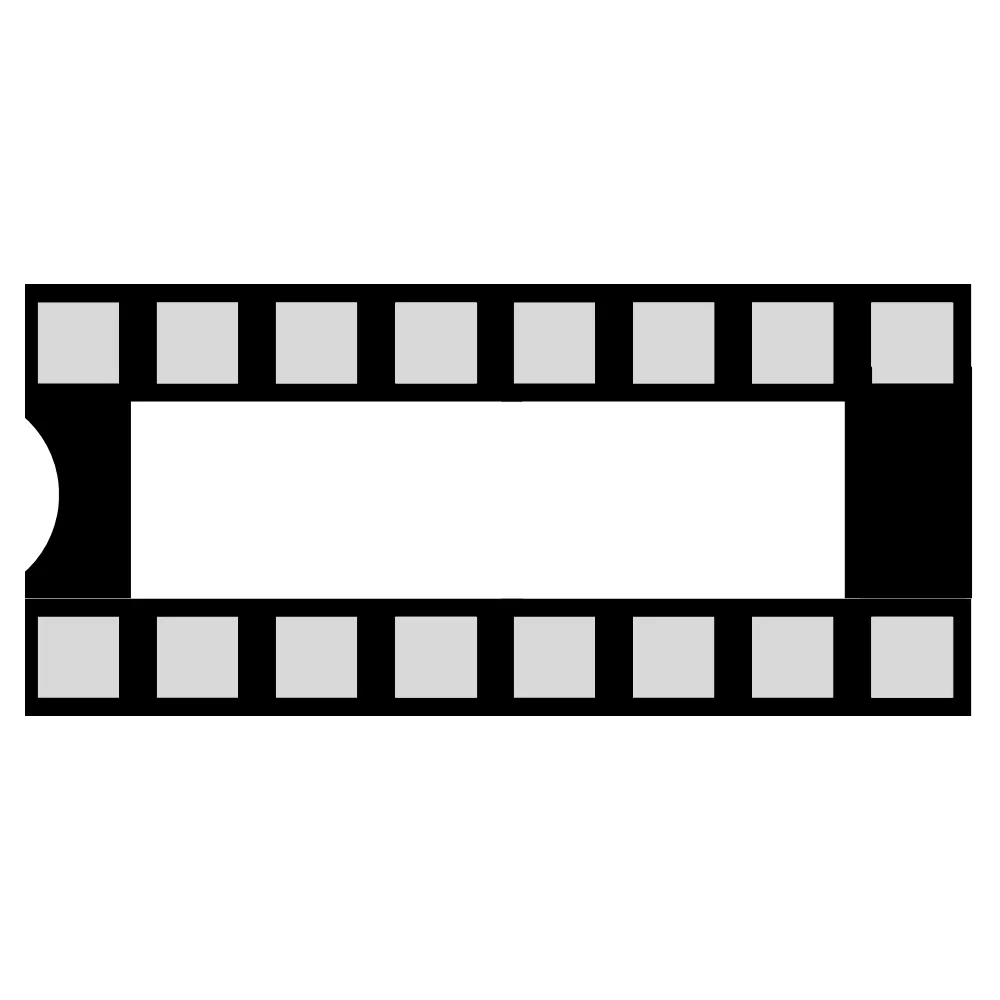 |
| 555 Timer IC | IC1 | 1 | 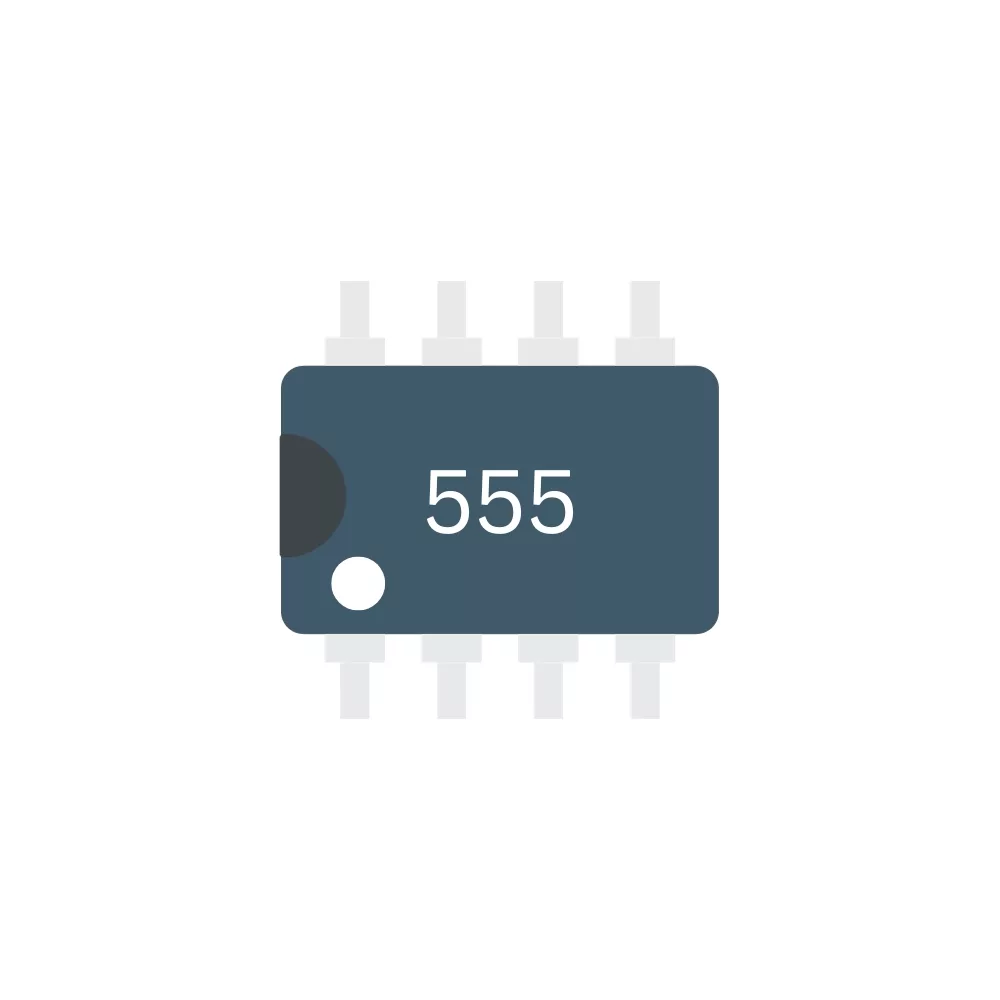 |
| 4017 Counter IC | U1 | 1 | 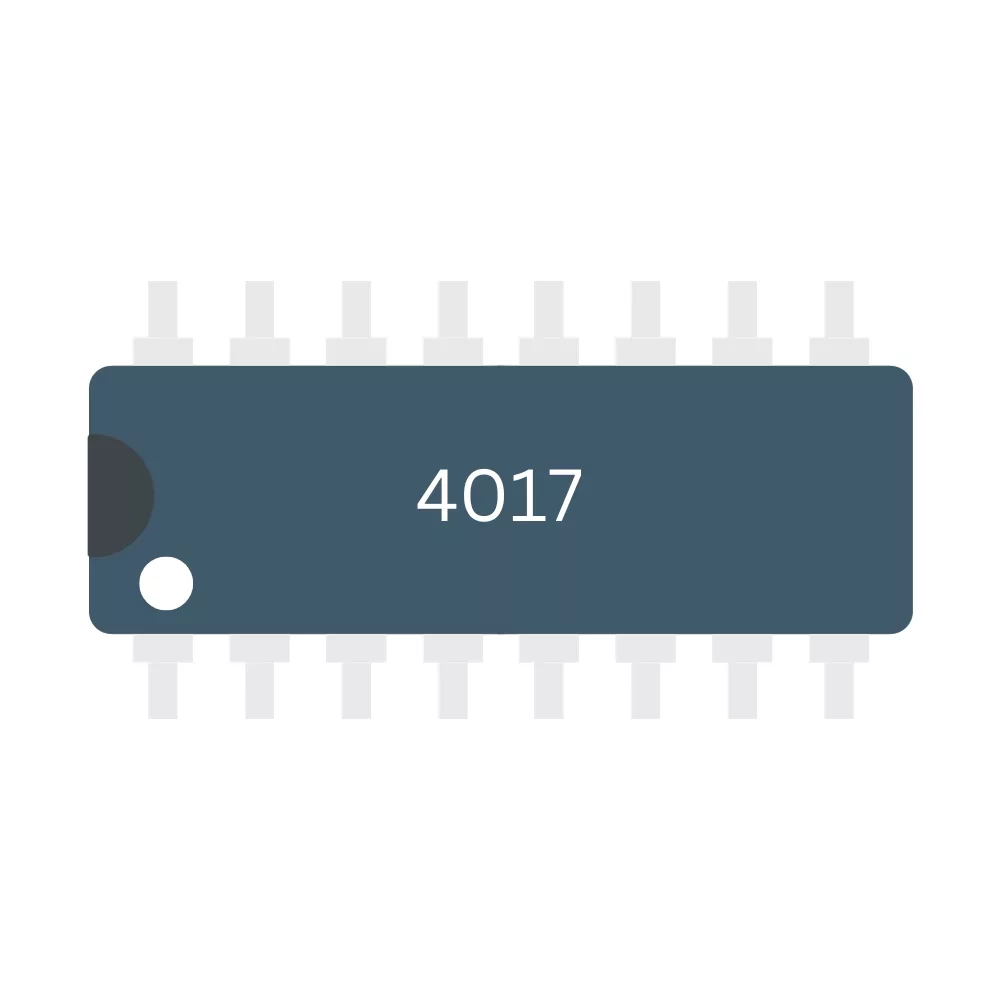 |
| 100nF Ceramic Disc Capacitor | C2, C3, C4 | 3 | 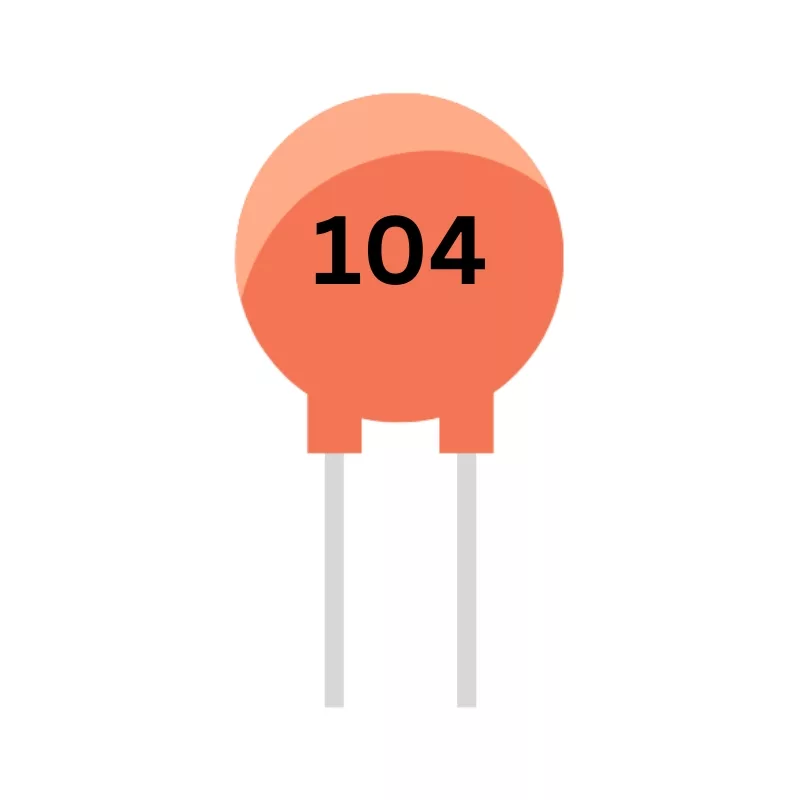 |
| 100uF Electrolytic Capacitor | C1 | 1 | 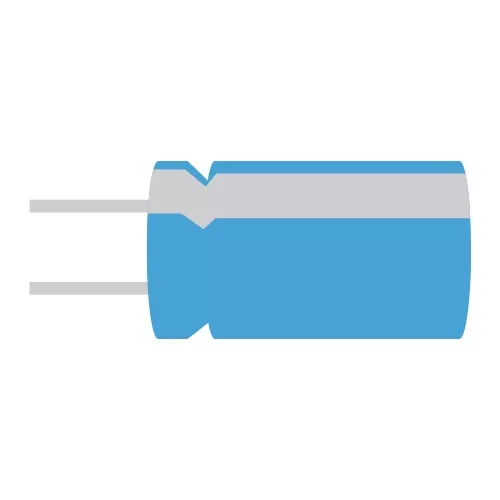 |
| 1K Resistor | R1, R2 | 2 | 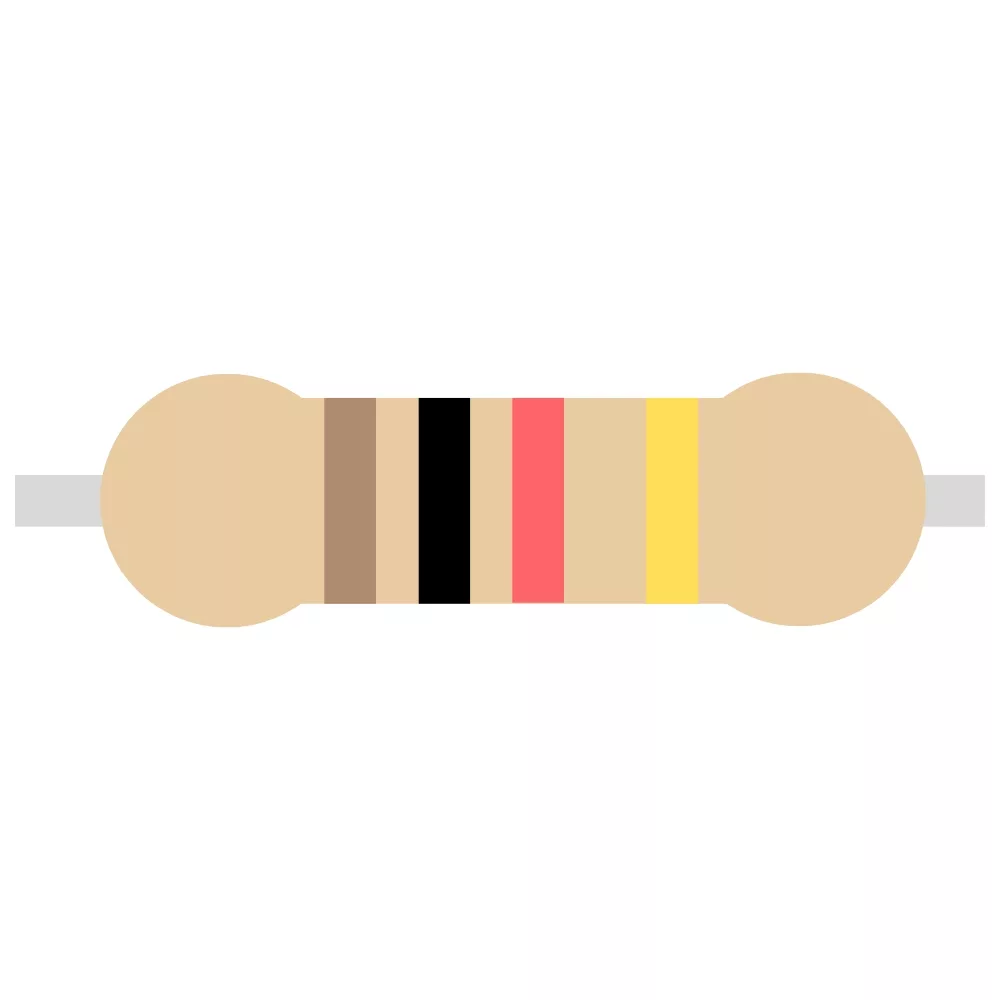 |
| 3mm Red LED | D1 - D10 | 10 | 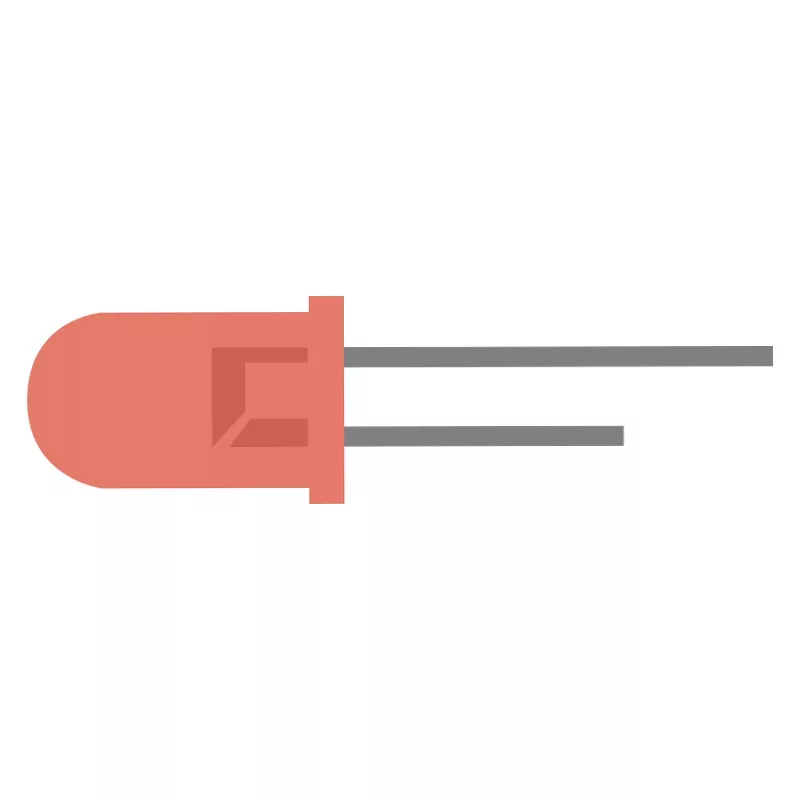 |
| PP3 Battery Connector | - | 1 | 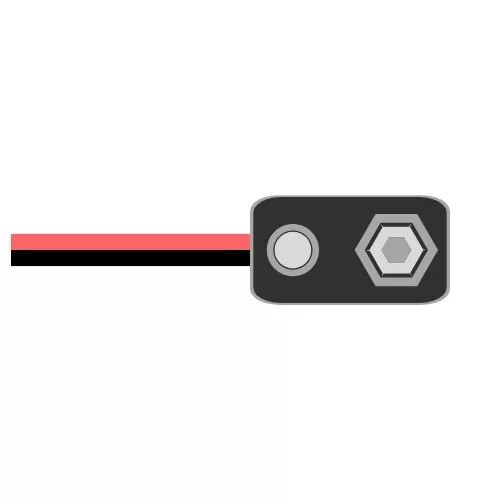 |
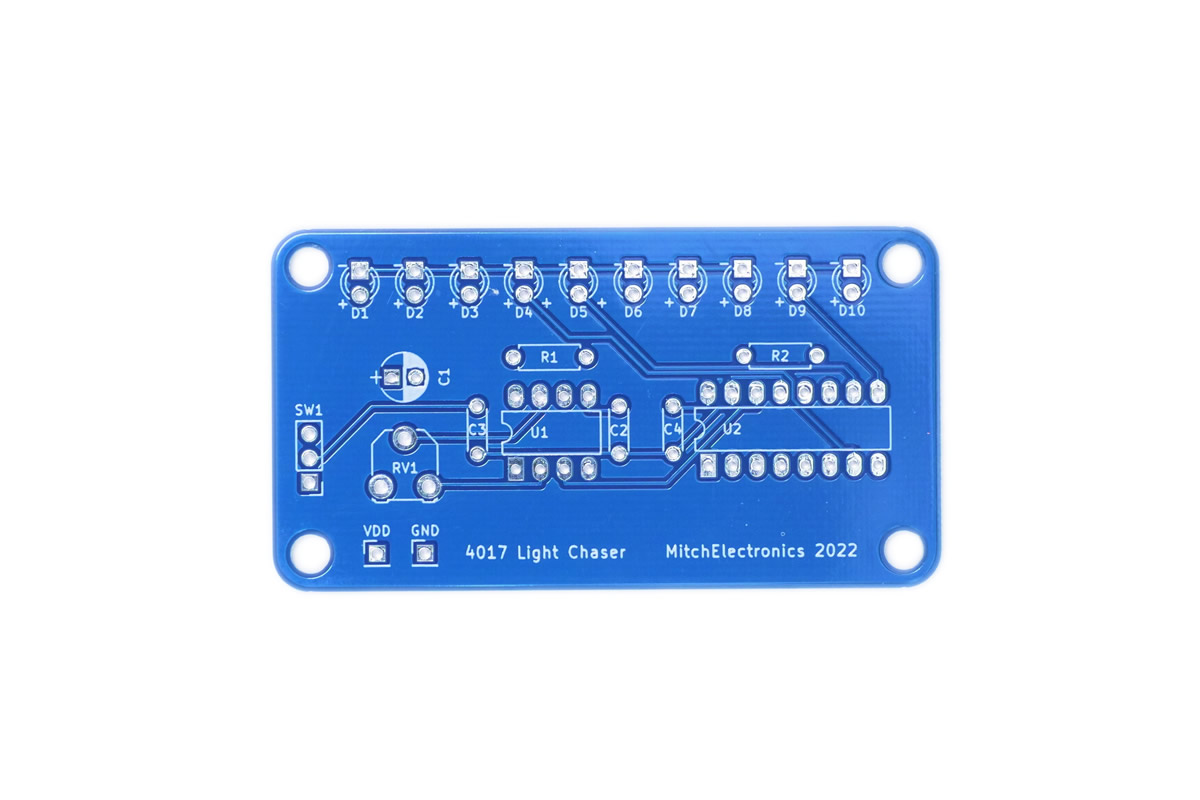

To learn more about how to solder electronic components, download the Electronics Construction Manual free using the button below
Electronics Construction Manual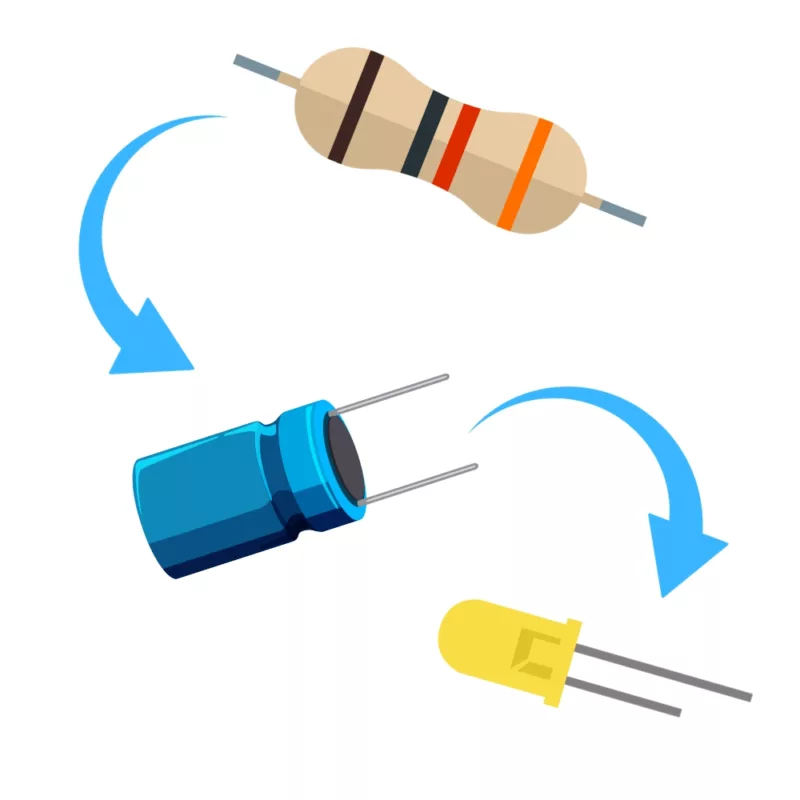
When soldering components, it is essential that you do so in a particular order, so that it is easy to add components and get to their legs. Generally, you always start with the smaller components (such as resistors and capacitors), before moving onto the larget parts (potentiometers and ICs).
Soldering Guide
Feeling brave? Hack the PCB and connect multiple 4017 kits together to make even longer chains!